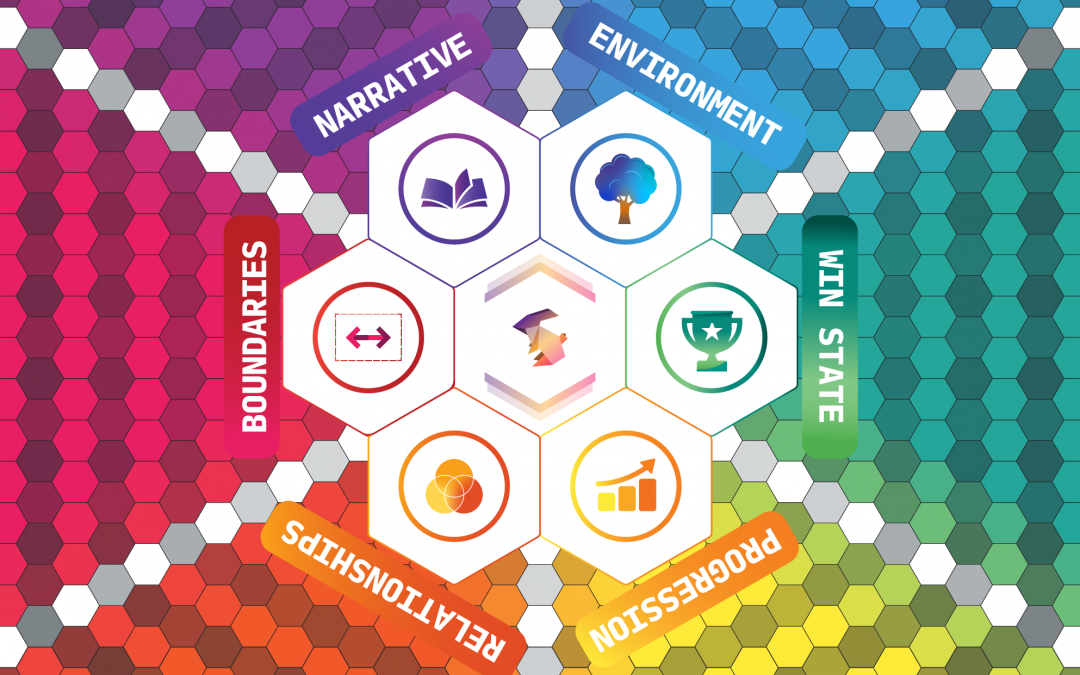
by Bernardo | Jul 11, 2022 | Framework 2022, Gamification
After a couple of years of using and training others in the use of our old framework, I finally decided it’s time to give it a spin and update in several ways.
The first thing I wanted to do is use what we have learned from the industry and simplify the system so it’s a lot easier to create a gamified environment. Doing that isn’t easy. It took about three years of work and testing.
I finally redesigned it.
Some of our steps were disordered from a natural flow so we changed them. I also realize several steps were out of place or many players didn’t use them at all so I made those steps optional in case someone wants to dive deeper in their designs.
So let’s do this!!
All new cards and new frame!
by Bernardo | Feb 19, 2022 | Education, Gamification
My wife was just talking to my daughter Hana. She casually said “Let’s go to the fridge and play ‘letters'”. We bought those magnetic letters that you put on the fridge to write whatever you’d like… Not too much of a story there but the meaning behind those words is the motto of BLUERABBIT.
For the past years I’ve been saying at the end of every talk a phrase I used to tell my dad when I was eight.
Life is a game. The thing is that when we grow up we get to play for real.
So imagine you approach your next writing assignment as “Let’s play letters” instead of “I must write a 5000 words article”
I think we can approach life like this. All of us, like a one and a half year old learning such a complex thing as the alphabet by “playing letters”
by Bernardo | Nov 15, 2021 | Gamification
For the past years the gamification community has been using the term gamification defined as “the use of game-mechanics or game-elements in a non-game context” and that has brought a lot of confusion and discussion in the industry.
Primarily the main problem lies behind how words are written (those bastards at Webster!!). @Andrzej Marczewski puts it very clearly in his latest entry:
Take the word beautify as an example. The Oxford dictionary defines that simply as “make beautiful”. Whilst we are thinking of the word simply, it also defines simplify as “make simple”.
So, it stands to reason that the layperson would look at the word gamify and assume it means “make gameful” or just “make game-like” (as gameful isn’t really in common language still). And, as we are looking at this from the layperson perspective – I’m throwing in the word game as well, not just game-like!
Almost every time he writes something the industry kind of shakes a bit. At least it helps us all brush the dust on some things we take for granted and remember the basics.
Merriam Webster’s definition still stands like this:
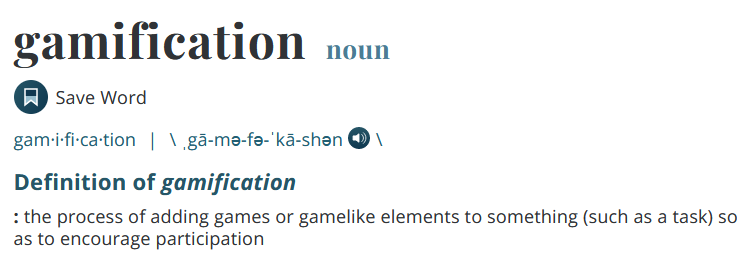
The problem with this definition is that it leaves a lot of components to interpretation and complicates everything for experts, newbies, stake holders, customers, clients, participants, players and your dog if they ever heard the word.
The new proposed definition by @Andrzej is a lot simpler, easier to understand to anyone AND the most important thing, it works.
So I’m jumping on this boat and will update my current material accordingly as this is the result and evidence of years of work from hundreds of experts in the industry.
Gamification is the process of making something a game or game-like.
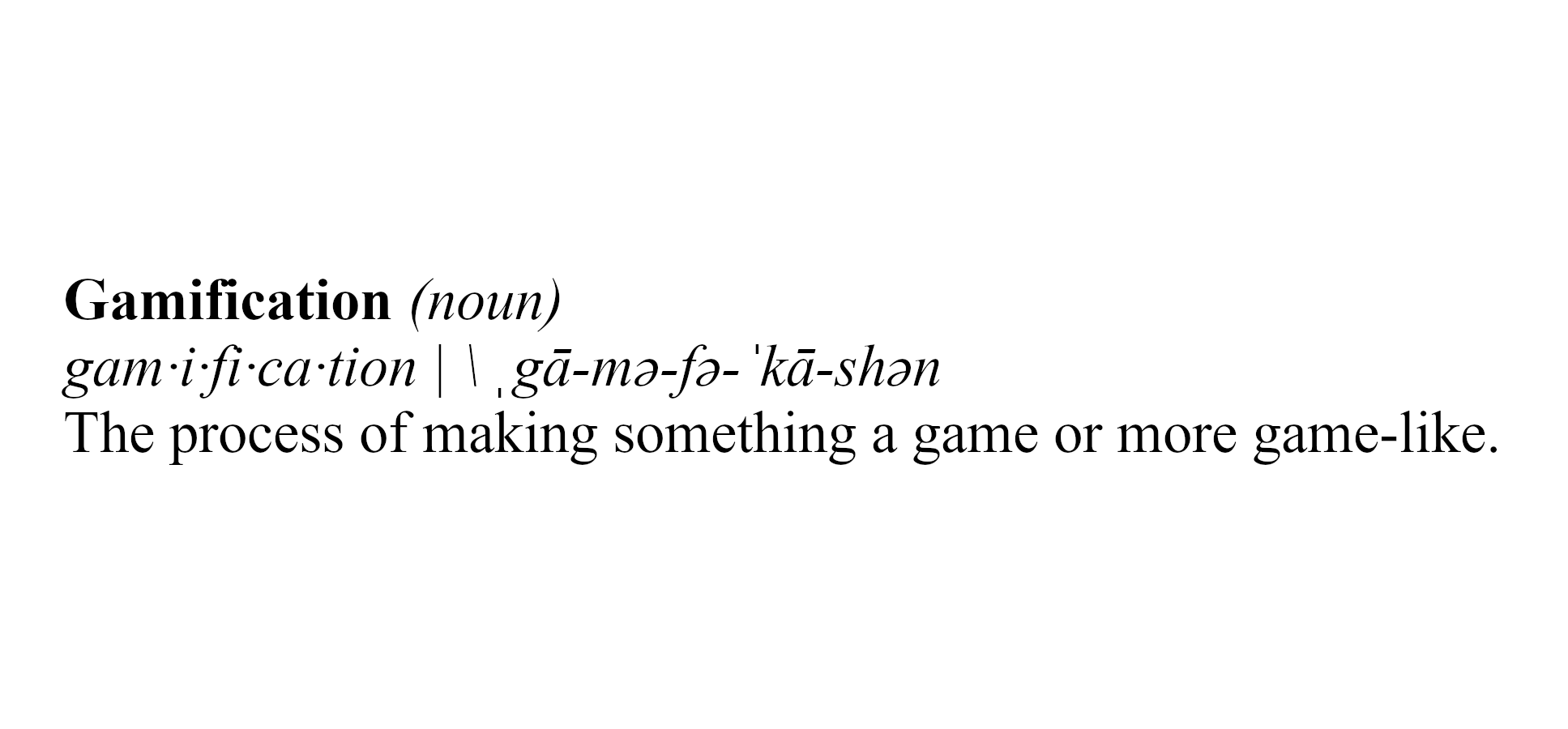
End of discussion. At least for another ten years I hope.
by Bernardo | Feb 22, 2021 | Gamification
Alright!!! So for all of you attending Gamicon 21v (https://gamicon.us)
What you need to do to build a player journey using an analogue version of BLUERABBIT is this:
- Assumption just for this case >>> You are in charge of running a learning experience.
- The Problem for this scenario >>> The participants don’t engage with the players.
- The tools at hand to increase engagement are:
- QUESTS >>> A way of submitting content. Whatever it is, text, image, links, videos or documents. It can come in the shape of a survey or with steps to complete. The core point of a quest is that the content is not evaluated but required.

- CHALLENGES >>> A way of measuring knowledge in the form of multiple choice quizzes.
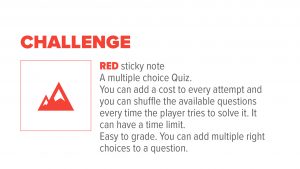
- ACHIEVEMENTS >>> It’s a tool to award resources that neither the quest or the challenge cover. It can be scanning a QR code they find in their email or the physical mail or under a table (when COVID stops). It can be actively recognizing the best question made to a speaker or anything.
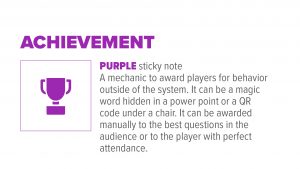
- Follow the engagement loop:
PROMPT > ACTION > PROCESS > CONSEQUENCE > CHANGE > FEEDBACK > PROMPT >
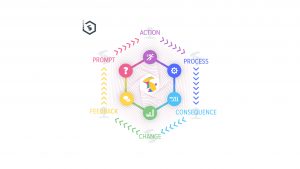
Now. The challenge is to create THREE activities choosing your tools. any combination of those tools and you ask something of the players. The only thing that’s open for you is the subject. So let’s say you want the players to learn about apples. What are the three first activities related to apples you want the player to do/learn?
Maybe 2 quests and a challenge:
- Quest 1 > Upload a picture of your favorite apple
- Quest 2 > Tell us what is the best apple and why?
- Challenge > Answer these three simple questions about apples
by Bernardo | Apr 5, 2020 | Gamification
COVID-19 is without a questions the biggest challenge humanity has faced at least since the World War II. What’s fascinating is the work of millions of people all developing creative solutions. Humanity needed a common enemy to oin forces and finally something that isn’t giving us a choice has come up.
Don’t get me wrong. This is a BAD situation. Humanity is at risk and I’m scared for my wife, my dogs, parents, brothers, family, friends and literally anyone who has a heart and blood through their veins.
However falling victim to the panic isn’t helping anyone. We MUST focus on providing the best solutions humanity has ever seen.
Can you imagine this catastrophe hitting us in 1990 with no internet, little cellphone connection and depending only in TV and newspaper to learn about the virus? How many people would’ve died before China’s virus data reached every single country out there?
We have so many tools at our reach this days we need to pull them all together and provide solutions for everyone. Specially those who can’t stay at home.
BLUErabbit has solved some issues in education in the past but we are now commited to upscale our service to improve the lives of every single kid out there who requires better learning.
I hope all schoolsl understand the need of a digital engaging software that will help teachers improve learning without them having to be in the room. It’s also really important to understand that no school system can function without teachers. It may work without walls, but not without those caring for learning and developing the content our children need to become better.
Teachers are and will always be the front-line fighters for the learning system. For them, another type of heroes, we will be providing a couple of webinars through the next weeks to help them learn how to increase motivation and engagement in what now will become the new normal for quite a while.
I believe the most important teaching COVID-19 is bringing is that schools will change forever (as the working environment, but that’s another post…) and learning what will help players progress and what won’t is fundamental to ensure our younger generations reach new heights of knowledge.
I hope for the best outcome for humanity. I believe we are all capable of joining forces and defeat this challenge.
#Stayathome and don’t fall in despair. We will come out of this better than before. Humanity has 7.7 billion brains . All of them willing to survive.
May the force be with us.
by Bernardo | Dec 29, 2019 | Gamification
What I mean by gamified problem solving is how to break down the solution into a clear loop we must construct to provide a successful gamification system.
This is just a first approach to it and will keep working on it as I feel it’s incomplete, although, it seems to be in the right direction. I will try to be as clear as possible.
The first thing to understand about a gamification system is that the goal is to solve a problem. If your system wasn’t designed for this, you will end up with more obstacles than advantages. So start there.
My loop on gamified problem solving goes something like this:
- The Goal is to solve a (the) problem(s).
- Problems are solved by Actions.
- Actions are executed by Agents.
- Agents ability is determined by Skill.
- Skill can be increased with Tools and/or Experience.
- Tools and Experience are rewards for Progression.
- Progression is earned by achieving Goals.
In gamification, agents are usually players, however it’s not always the them that execute an action but it can be the system (automated), the Game Master or an NPC.
If you want to reach a solution, you need three legs on that table: Problem, Agents and Actions. Everything else, is glitter. That’s why it’s important to create the loop focusing originally in SOLVING THE PROBLEM.
Once you build a loop with many different components it will help you design better systems making sure you don’t forget details in the process.
We know how hard Gamification Design is. Breaking it down helps with concrete logic to achieve the goal.
Feel free to break my breakdown. It’s really fresh and I know it needs a lot of work, though it’s a good start… I think.







